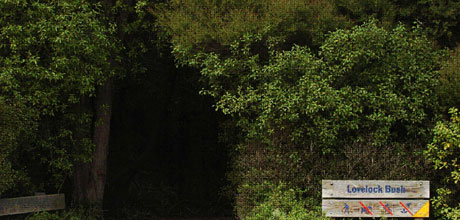Lovelock Bush
This article was first published on 27 Nov 2010.

Lovelock bush.
A feature of Dunedin Botanic Garden is the extensive areas of native bush. One such area is Lovelock Bush bordered by the Northern Cemetery, Rhododendron Dell and the Native Plant Collection.
The land occupied by Lovelock Bush was once cleared of vegetation and although we don’t know exactly what was growing there, it is likely kanuka was present nearby. Once the bush was allowed to regenerate in the late 1800s, this provided a seed source for the kanuka here today.
You can easily see the different layers of vegetation. Kanuka is the dominant canopy and underneath is the sub canopy of broadleaf trees, including some podocarps. Lower still are the shrubs and saplings and throughout both layers are climbing plants. On the ground are the low growing ferns and herbaceous plants.
Part of the management of Lovelock Bush is removal of pest plants. Garden escapees such as holly and elderberry can become invasive weeds, along with blackberry and ivy. Sycamore is less of a problem here but still needs removal at the seedling stage. There are even native species out of their natural range that need some control.
As with everything in nature, the bush will continue to go through changes that will mean it will be different for generations to come. The kanuka is declining with maturity and naturally thinning out. With time the current sub canopy will replace it as the dominant canopy. Wouldn’t it be grand to see the likes of rimu, matai and totara once more as a dominant feature of our local bush?


